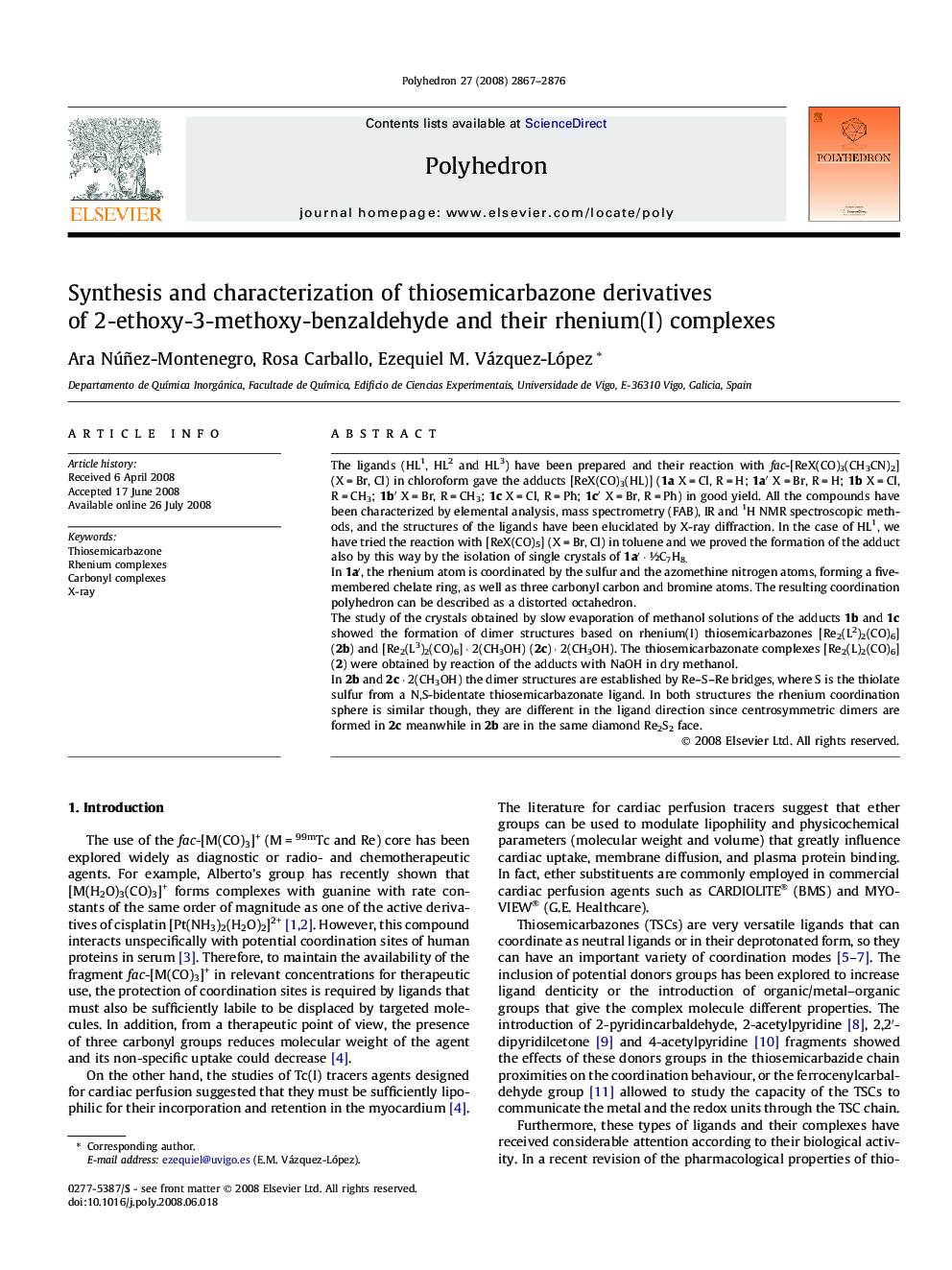| Article ID | Journal | Published Year | Pages | File Type |
|---|---|---|---|---|
| 1340351 | Polyhedron | 2008 | 10 Pages |
The ligands (HL1, HL2 and HL3) have been prepared and their reaction with fac-[ReX(CO)3(CH3CN)2] (X = Br, Cl) in chloroform gave the adducts [ReX(CO)3(HL)] (1a X = Cl, R = H; 1a′ X = Br, R = H; 1b X = Cl, R = CH3; 1b′ X = Br, R = CH3; 1c X = Cl, R = Ph; 1c′ X = Br, R = Ph) in good yield. All the compounds have been characterized by elemental analysis, mass spectrometry (FAB), IR and 1H NMR spectroscopic methods, and the structures of the ligands have been elucidated by X-ray diffraction. In the case of HL1, we have tried the reaction with [ReX(CO)5] (X = Br, Cl) in toluene and we proved the formation of the adduct also by this way by the isolation of single crystals of 1a′ · ½C7H8.In 1a′, the rhenium atom is coordinated by the sulfur and the azomethine nitrogen atoms, forming a five-membered chelate ring, as well as three carbonyl carbon and bromine atoms. The resulting coordination polyhedron can be described as a distorted octahedron.The study of the crystals obtained by slow evaporation of methanol solutions of the adducts 1b and 1c showed the formation of dimer structures based on rhenium(I) thiosemicarbazones [Re2(L2)2(CO)6] (2b) and [Re2(L3)2(CO)6] · 2(CH3OH) (2c) · 2(CH3OH). The thiosemicarbazonate complexes [Re2(L)2(CO)6] (2) were obtained by reaction of the adducts with NaOH in dry methanol.In 2b and 2c · 2(CH3OH) the dimer structures are established by Re–S–Re bridges, where S is the thiolate sulfur from a N,S-bidentate thiosemicarbazonate ligand. In both structures the rhenium coordination sphere is similar though, they are different in the ligand direction since centrosymmetric dimers are formed in 2c meanwhile in 2b are in the same diamond Re2S2 face.
Graphical abstractNew thiosemicarbazone ligands (HL) have been prepared and their reaction with fac-[ReX(CO)3(CH3CN)2] gave the adducts [ReX(CO)3(HL)] (1). The thiosemicarbazonate complexes [Re2(L)2(CO)6] (2) were also obtained by reaction of the adducts with NaOH. In both compounds ligand is S,N-bidentate and in 2, dimer structures are formed by Re–S–Re bridges.Figure optionsDownload full-size imageDownload as PowerPoint slide
